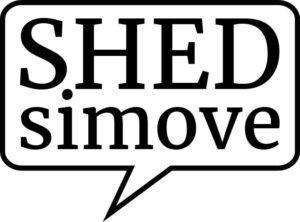What Is An Elevator Pitch?
An Elevator pitch For Your Business straddles the line between being a simple concept to understand and a challenging art form to truly master in practice.
The name says it all: pique a prospective benefactor’s interest in your idea, product, business plan or even candidacy for a job within roughly the span of an average elevator ride. Instead of memorizing a Shakespearean script, you only have to tell a witty cocktail party story. That’s where the elementary simplicity of the elevator pitch ends. You then have to narrow your spiel down to the essential enticing details you can smoothly weave into a handful of sentences from a sea of factoids, selling points and exhaustive, utterly fascinating research. All the while, the seconds you have to captivate your mark whiz past like bullets spewing from a machine gun.
No matter what you shill, uphold this single conditional statement as an infallible absolute: if you cannot find a way to explain something simply, you may not understand it yourself. That is exactly what sets the elevator pitch apart as the quintessential litmus test of an idea man’s mettle.
Elevator Pitch For Your Business Plan
You have 60 seconds to define the problem your proposed business aims to tackle, describe your solution, paint a picture of your target market, identify your competition, introduce your team and present a financial summary alongside suggested milestones demonstrating your company’s traction.
When laying out your problem and solution, accept that you do not have to attack something massive. It just has to be a conundrum worth solving. Simple is fine. As long as you have a clear problem statement, you can focus your novel plan of attack on a single idea inspired by one plainly drawn issue within a few sentences or bullet points. Of course, your proposed solution must also take into account exactly who grapples with your specific problem, how many individuals are likely to buy into what your business would sell and how you envision that market as divided segments.
Next, you have to know who else will assuredly be vying for the same market’s attention and money with alternative solutions. More than likely, that will also inform how you describe each member of your team, what everyone brings to the table and which positions are still awaiting the ideal man or woman for the job ahead. Your financial summary likely won’t amount to much more than who pays your company’s bills and what expenses you anticipate, but that doesn’t make it any less important to your pitch. After all, that will lead into discussing how you plan to achieve your explicitly stipulated goals and on what manner of timeline. That’s the clinching element that punctuates your statement that you have taken this idea seriously enough to bring some immersive thought to bear behind it.
Elevator Pitch For A Sales Rep
For the love of Don Draper, abandon your notions of ‘impressing’ a prospect. No matter what you say, you stand apart from or above nobody. It makes no difference in the long run how many million-dollar names and loaded corporate buzzwords you drop. In essence, you have probably managed to insinuate your own superiority by coming across as some self-styled intimidator. It’s all fun and games until the Chihuahua barks incessantly at an English Mastiff and realizes just how ineffectual and irritating its yapping can be.
A sales rep’s elevator pitch is about illustrating results. A truly smooth operator magnetizes prospects by focusing on the issues, needs and concerns costing them sleep night after night and how he can ease their burdens. Their pitches invite discussion and leave leads wanting to hear much more. People are never more susceptible to persuasion than when they are made to feel as though their troubles genuinely matter to someone.
Elevator Pitch For Job Seekers
Can you talk your way into a job within a minute? Absolutely, if you think deeply about one classic job interview moment when time never fails to stand uncomfortably still: ‘Tell me about yourself.’
There are few sink-or-swim moments in an adult like quite like being thrown flailing into the deep end by this open-ended request for a dazzling extemporaneous self-introduction. The first time you have to summarize your personal character in a few brief sentences, you may very well drown. With each successive leap into the water, you tread water just a bit more confidently. Dive in enough times, and you find yourself merrily backstroking.
Welcome to the essence of the elevator pitch.
You have less than a minute to set the tone for everything you may have a chance to tell your potential new boss about who you are and what type of work you do. Think about your desired outcome, and tailor your introduction accordingly. Structure everything around your specialty. If you are an in-demand accountant with 15 years of experience under your belt, don’t mince words painting yourself as a Jack-of-all-trades journeyman who happens to have a knack for numbers. If you want to be distinctly remembered, show your prospect the highlights of your explicitly defined wheelhouse. That includes letting them know what you have been up to lately as a means of further filling in your expertise and being clear about the course you would like to follow in the immediate future.
This is exactly where every elevator pitch template converges upon a single objective: cajoling a prospect to say, ‘Tell me more.’ For the job-seeker, that could mean being asked to elaborate on why you would want to explore new job opportunities. When pitching a product or a business plan, a pitch that properly teases something that sticks in someone’s mind like a splinter will end in an exchange of contact information and an offer to sit down for a more in-depth discussion. The elevator pitch is not built for an on-the-spot ‘yes’. Your driving objective is to guide and expand the conversation.
Polishing Your Elevator Pitch
Like any sharpened public speech, an elevator pitch comes together only with writing, rewriting, practice and as many trips through that cycle as you need to sweat nary a bullet when launching into it. Even a few rehearsals each day ingrains your approach a bit more deeply until you can share the strengths and facts associated with whatever you happen to be selling with a smooth, knowledgeable organization. Focus flows from repetition, though. Don’t rattle off five or six things you know a little bit about. Emphasize the clarity of a few bullet points to convince someone that you know far more than you have time to tell at that specific moment.
When those elevator doors open or once you move along through the rest of your networking crowd, you may not have a concrete ‘yes’ in your pocket, but you could have a business card and a follow-through reminder to add to your next workday’s agenda.
Blog Posts
- Should You Trademark, Copyright Or Patent An Idea?
- How To Launch A New Product
- ‘After Lunch Speaker’ at the Royal Opera House
- Motivational Speaker Los Angeles
- DIGGIT event, Ljubljana, Slovenia
- A Motivational Speaker in Bucharest Romania…
- RESPONSIBLY BEER from Shed Simove
- How a Post-it got me noticed at a speech in London…
- Speaker Sheet | Shed’s At A Glance Speaker Sheet
- Shed as a motivational speaker on creativity | Sales and marketing
- Motivational Speaker Kingston University, London
- How To Overcome Your Fear Of Public Speaking
- How To Use Standup Comedy To Engage Your Audience When Public Speaking
- How To Craft The Best Elevator For Your Business Or To Land A Job
- How To Make A Square Video
- These Top Networking Mistakes Will Guarantee You Won’t Get A Call Back
- Creative Solutions For Work-At-Home Productivity While Starting Your Business
- Careers That Make Great Springboards For Transitions To Entrepreneurship
- How I Drove Huge Global Media Exposure With A Simple Dating Idea
- Best Activities For Team Building In Las Vegas
- Why Some People Don’t Succeed In Life?
- 11 Tips to Improve Work and Life Balance in Los Angeles
- Top 10 Presentation Mistakes You Should Avoid At All Costs
- 3 New York Fortune 500 Companies Who Need Motivational Speaking To Get Them Through Tough Times
- 7 Ways This Entrepreneur Has Got Into Trouble & The Lessons That Boosted His Success
- How To Add Humor To Your Keynote Speaking Engagement
- 16 Different Types Of Keynote Speakers You Should Consider For Your Next Event
- How To Prepare For A Motivational Speaker At Your Conference
- ‘Make America Grate Again’ Grater Dares To Take On Trump’s Nutty Side
- How To Hire An Inspirational Speaker For Your Event
- A Motivational Speaker In Salzburg, Austria…
- On The Same Bill As Keynote Speaker Gary Vaynerchuk!
- How To Manage Toxic, Difficult People In Work And Life
- How To Change Someone’s Mind With Careful Persuasion
- Funny Public Speaking Topics To Win Over Your Audience
- How to Be A Confident Leader In Tense Situations
- How To Connect An Audience That Distrusts You & Change Their Minds
- Great Ideas Gone Viral & Done Right | Shinder Dating App Drives Massive Exposure & Girls Too!
- 6 Inspiring Product Launch Venue Ideas In Los Angeles They Will Never Forget
- Radical Creativity At Burning Man In Nevada Will Inspire You To Think Beyond The Box
- 8 Public Speaking Mistakes That Will Get You Fired in 5 Seconds Flat
- 9 Ways To Build Confidence In Business & Take On The Universe With Panache
- How To Give A Memorable & Inspiring Speech
- 8 Powerful Tips For Public Speaking Onstage
- Team Building Exercises In Los Angeles That Are Fun (or virtually anywhere)
- Great Things Entrepreneurs Can Learn By Attending Las Vegas Trade Shows & Seminar Talks
- How Los Angeles Startups Succeed On A Guerrilla Approach To Everyday Problems
- 4 Things Every Budding Entrepreneur Should Do After Arriving In Las Vegas
- Why Los Angeles Is The Driving Force Of Innovative Ideas
- How Watching Inspirational TED Talks Can Lead You To Become A Better Entrepreneur
- How To Become A Motivational Speaker
- Creativity is the new power! Knowledge is dead!
- How To Train Your Mind To Be Creative And Gain A Competitive Edge
- What Does an After Dinner Speech Do?
- A Motivational Speaker In Austin, Texas…
- How to Write a Popular Blog Post on Quora
- Looking For A Motivational Speaker?
- Why I Hate Business Cards
- How to Have Great Ideas…
- I’m Named a ‘Marketing God’!


LEAVE A REPLY